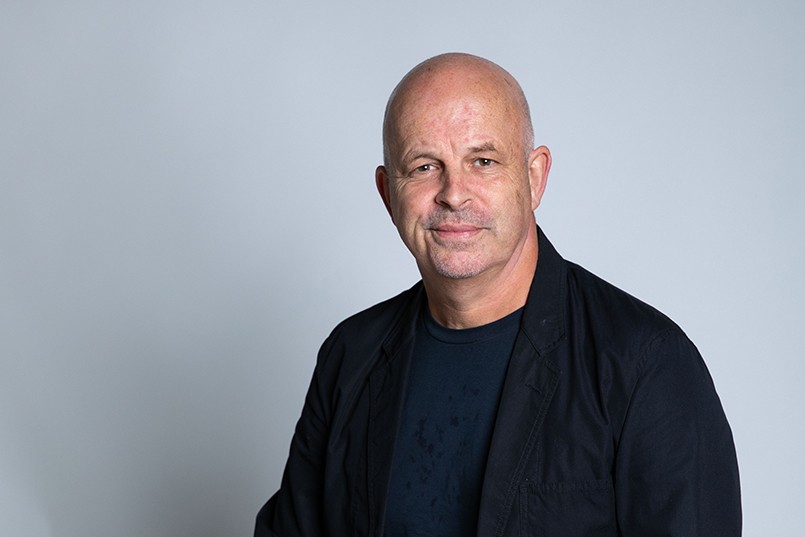The ANA recently reported that 80% of their membership had in-house agencies. That is a staggering statistic at face value that garnered the headlines it deserved. But I wonder if all of those advertisers really had an in-house agency or had just bought in-house what they had previously outsourced?
After all, if you extrapolate that statistic to all advertisers in the USA and assume that when they say agency they mean a facility that provides all of the services their external agencies provided in the past then it would be fair to expect an 80% drop in advertising spend with those external agency providers.
It is rather more likely that 80% of the ANA members have taken advantage of the fact that the lower cost of technology required and the advantages of providing these services in-house means they are bringing some of the services they were outsourcing inside their organisation.
So I wonder if we need to be more specific about what it means to say you have an in-house agency. Because in our experience with hundreds of advertisers in multiple markets around the world, an in-house agency can mean everything from a designer sitting at a desk with an Apple Mac and Adobe Creative Suite to a fully functional strategic, creative, media buying and production capable in-house agency.
Why is it important to differentiate these instead of simply placing them all into the In-House Agency Bucket? Because in almost every case there is still a major role for external agencies, but there are also significant implications for the way the marketing team (and in fact often the organisation) interact with the external agencies and suppliers. So here is some definition around this growing group called the In-House Agencies.
The Design Hub
If this were considered an in-house agency then I would be expecting the results from the ANA members survey would be 100%. The proliferation of what was known last century as desktop publishing means that today even your uncle could have a design hub in his spare bedroom at home if he has any design skills.
The software and hardware is increasingly affordable and therefore it is smart that if your organisation produces a reasonable volume of marketing and sales material then you should have this facility in-house. The biggest challenge is finding the design talent to deliver the design work that is required.
This can be simple visual or print design work from Powerpoint Templates to Sales Presenters to Annual Reports. But technology means that from the same design software you can also produce webpages, digital display ads and e-direct mail designs and a whole range of design elements.
In our experience this is the most common in-house ‘agency’ and yet much or the work that goes through the Design Hub is for all parts of the organisation and not just marketing including Sales, the CEO, the distributors, retailers and more. They are also often taking design and digital resources prepared by the agencies of the organisation and the suppliers.
But it is an agency? It could be suggested that the designers are creative but I think it is more accurately called a Design Studio or Design Hub. But it could become more common with time and demand.
The Social Media Hub
Social media has not only impacted marketing and advertising, but has had a significant impact on sales and particularly corporate strategy or corporate affairs, responsible for the management of the corporate reputation of the organisation with Government, Investors, Shareholders and other stakeholders with an interest in the operations of the corporation.
The nature of social media being 24/7 feeds the 24-hour mass-media news cycle has meant that corporations have had to monitor social media and be able to respond appropriately in real time.
Across the hall the Community team are busy using Social Media to build communities of stakeholders. Down the hallway the sales team are building their B2B customer relationships using social media. Then around the corner the Marketing team are also using paid social media to boost their media reach and frequency without blowing the media budget.
No wonder with so many business functions within the organisations using (some may say abusing) social media channels it is not surprising that many organisations were quick to bring social media monitoring and management in-house.
The relative low cost of the tools and platforms that facilitate this function means there is a low cost of entry until it comes to recruiting staff, especially if you intend to be able to monitor and respond 24/7, as the public do not stick to business hours when it comes to social media.
There are increasing numbers of organisations that have built in-house social media functions and invested in platforms to monitor and manage their social media response. Ironically it is relatively rare for this to be centralised in one team, and often they are still heavily dependent on external suppliers and specialist social media agencies and public relations companies to assist.
It is also common for this to build an associated content creation team in-house to help feed the hungry social media beast. But is it an agency? It could be termed a Social Media agency but it is more accurately a Social Media Hub.
The Production Hub
As marketers embrace more communications channels the demand for content increases and the volume of work and the needs for production increase almost exponentially and yet marketing budgets are remaining static or increasing marginally.
The other issue is that deadlines and production timelines are getting shorter as marketers find themselves reacting and responding to the market. On the volume, cost and timing, many agencies struggle to meet their client’s expectations. This is because agencies are a labour intensive production option and therefore exponentially increased volumes come as exponential costs and shorter deadlines just add to the cost.
The alternative for many marketers is to decouple production from their agencies and bring this component in-house as a production hub. These production hubs take advantage of the low cost of production technology and will include traditional print, desktop publishing, digital and web design and build and increasingly video production, including shooting, editing and audio production, which can also produce podcasts and the like.
In our experience this is the growing sector of in-house ‘agency’ types. Its proximity within the organisation means that much of the work that goes through the Production Hub can be for all parts of the organisation and not just marketing. This often includes Sales, Corporate Strategy and more. In one case more than 60% of the work being done by the Production Hub was not marketing work and yet marketing was picking up the head count and the cost of the resources.
Now while the Production Hub produces the assets, the strategy and conceptualisation is often generated outside of the hub by the external agencies and consultants. So is it an agency? I think it is more accurately the Production Department or Production Hub. But it could be more and often will become more with time and demand.
The Content Hub
Take the production hub and add editorial creators such as journalists, scriptwriters, designers, videographers and the like and you have what is beginning to look like an advertising agency in-house. The reason being is that content marketing requires a major volume of high quality content, especially branded content.
While the Content Hub could create advertising, the fact is they produce branded content about as well as advertising agencies produce branded content. But the advantage of being in-house means that the cost of the overhead and profit margin is often absorbed, but more importantly it is easier for the team in the Content Hub to draw down on the organisation’s knowledge and resources to create content, much easier than it would be for an external supplier.
They are also on-hand to respond to issues and feedback that arises as the content goes through the approval process and this means that meeting content deadlines and delivering the volume of quality branded content is faster, cheaper and easier.
But is this an in-house advertising agency? Well it is getting close, but if it was external to the organisation it is called a Content Agency and therefore we believe it is more accurately a Content Hub. But it would not take much more for this to be an In-House Agency.
The Agency Hub
The Agency Hub or the In-House Agency is not a new concept. Half a century ago most major retailers had an in-house agency facility to produce their advertising needs. This was because the volume of advertising for a retailer, with a relentless year round program of sales, catalogues and advertising justified the investment required in those days.
Some of them even had their media planning and buying in-house and in fact a few do today. But it was unusual for non-retail brands such as CPG or financial services and the like to bring the agency services in-house until the lower cost of technology and the dramatic increase in volume for digital and social media channels again justified the decision.
Also it is not just creative, content and production, which we have seen increasingly move from agency to in-house, but digital media and specifically digital and social media bought programmatically means more organisations are considering or have taken this in-house.
This has been due to concerns over the security of their first party data that often informs these buys and the fact that technology platforms have eliminated the prohibitive costs of media planning and buying in-house.
Nevertheless it appears to us that while many advertisers contemplate in-house media planning and buying, few if any are completely eliminating the role of the external agency or ad tech platform provider in delivering this service.
But what does differentiate the in-house agency from the other hubs is taking all the strategic development, creative conceptualisation and the execution completely in-house. Even the most comprehensive in-house, full service agencies still rely on the support of external specialist suppliers to either provide specific skills that cannot be recruited in-house or to provide an external perspective when required, or to handle overflow when the volume demands exceed the in-house capabilities.
We recently reviewed what was called an in-house agency and yet all strategy and creative was outsourced through contracting smaller agencies, media planning was in-house but buying was outsourced and then most of the major production was also outsourced as the marketers had lost confidence in the in-house teams ability to deliver.
This is not unusual as one of the biggest challenges facing in-house agencies is recruiting the breadth of strategic and creative talent required to provide a full in-house agency service.
Any other Hubs?
This is not by anyway a comprehensive list of the various and many advertising, media and marketing services that organisations are taking in-house. But it does cover the major ones we have been involved in either assessing, benchmarking, restructuring or dismantling.
The in-house trend is certainly appropriate for an increasing number of organisations and their marketing functions. But it is important to be clear in defining what you are wanting to achieve in developing these services in-house and what services will deliver these objectives. Simply calling it an in-house agency is often misleading and will then set up the whole project for failure.
But there is another issue we have found with in-house agencies of all types and that is for all of the promise of delivering low costs, faster speed to market and greater collaboration, most have a problem proving it. But that is for another time.
TrinityP3’s Agency Remuneration and Negotiation service ensures that the way in which you pay your agency is optimal. Read more here




